Measurement and Types of Angles
Table Of Contents
🎬 Math Angel Video: Understanding Angles
What is an Angle?
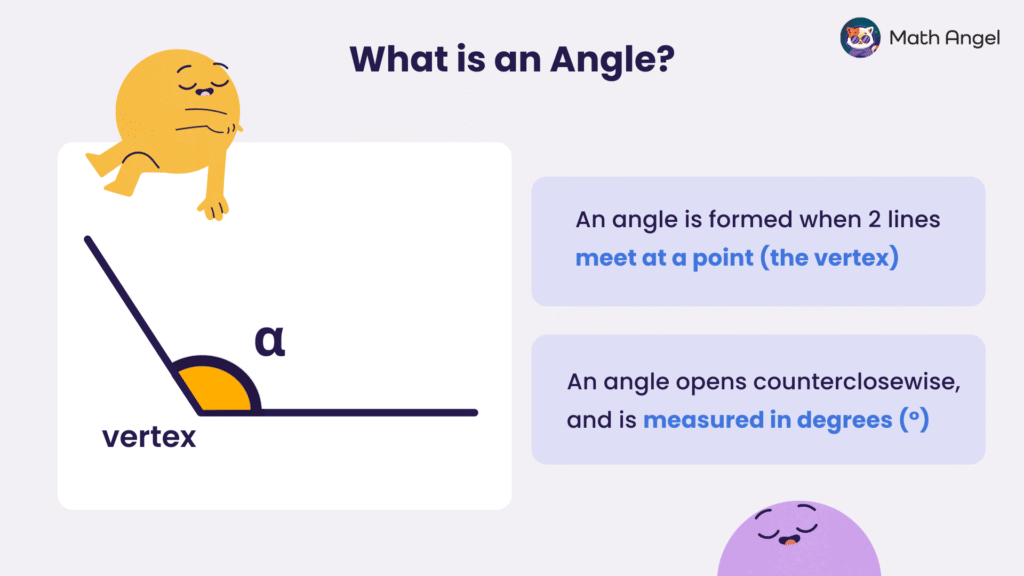
⏩️
🛎 Definition of an Angle:
An angle is formed when two lines meet at a point called the vertex.
- Angles are measured in degrees (°), representing the rotation between the two lines.
- Usually, angles are measured in the counterclockwise direction.
What are Different Types of Angles?
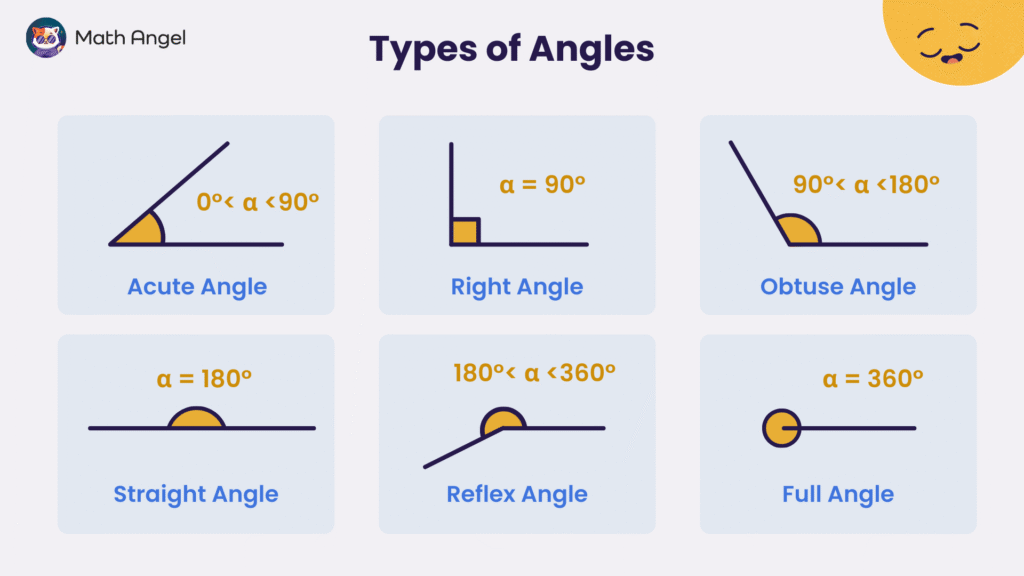
⏩️
Angles are classified based on their size:
- Acute Angle: Less than $90^\circ$
- Right Angle: Exactly $90^\circ$
- Obtuse Angle: $90^\circ < \alpha < 180^\circ$
- Straight Angle: Exactly $180^\circ$
- Reflex Angle: $180^\circ < \alpha < 360^\circ$
- Full Angle: Exactly $360^\circ$, a complete turn
How to Measure Angles with a Protractor?
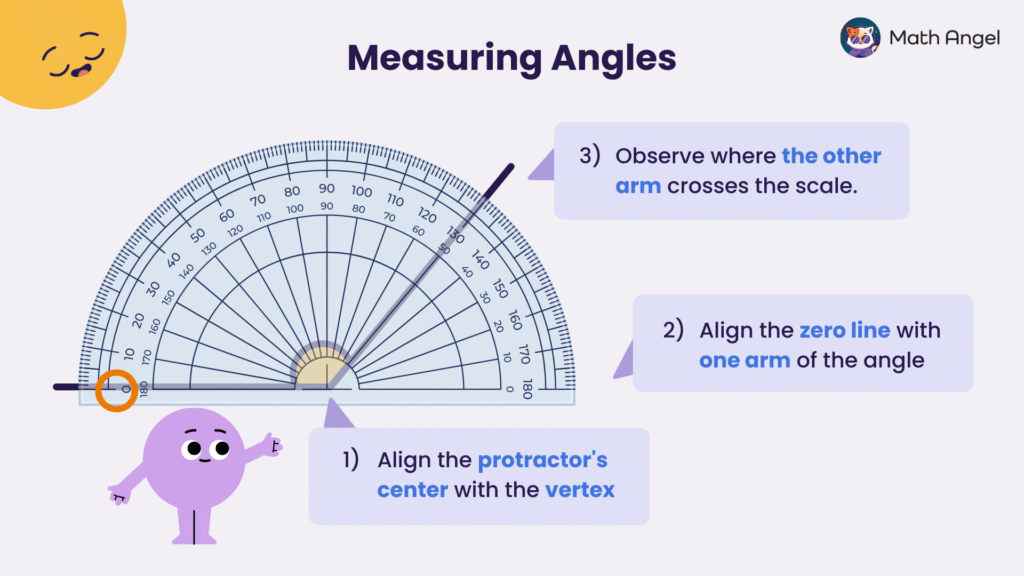
⏩️
To measure the size of an angle correctly, follow these 3 steps:
- Place the protractor: Align the center of the protractor with the vertex of the angle.
- Align the zero line: Ensure one arm of the angle is lined up with the zero mark on the protractor.
- Read the scale: Observe where the other arm crosses the number scale to determine the angle’s measurement.
🛎️ Example: Measure This Obtuse Angle
- Here, one arm of the angle is at 0°, and the other crosses at 130° (or 50° on the opposite scale).
- Since we know this is an obtuse angle ($90^\circ < \alpha < 180^\circ$), we take the larger value and confirm that the angle is 130°.
How to Measure Angles Over 180 Degrees?
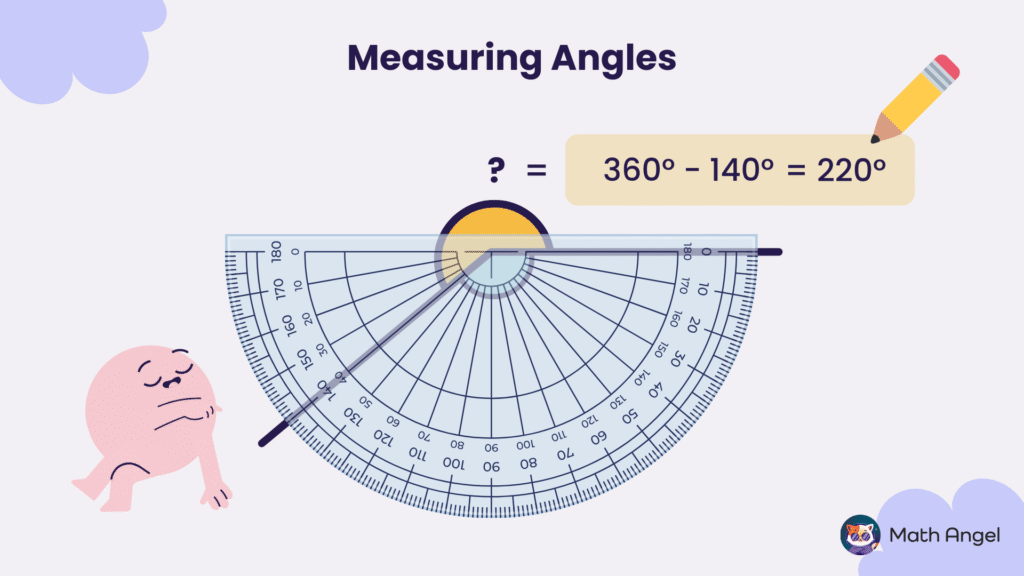
⏩️
When an angle is greater than 180°, we measure the opposite angle first and subtract it from 360° to find the correct angle.
🛎️ Example: Measure This Reflex Angle
- Instead of measuring the large angle directly, we first measure the smaller angle, which is 140°.
- Since a full circle is 360°, we subtract:
$$\text{Angle} = 360^\circ – 140^\circ= 220^\circ$$
Thus, this angle is 220°.
How to Draw a 40° Angle?
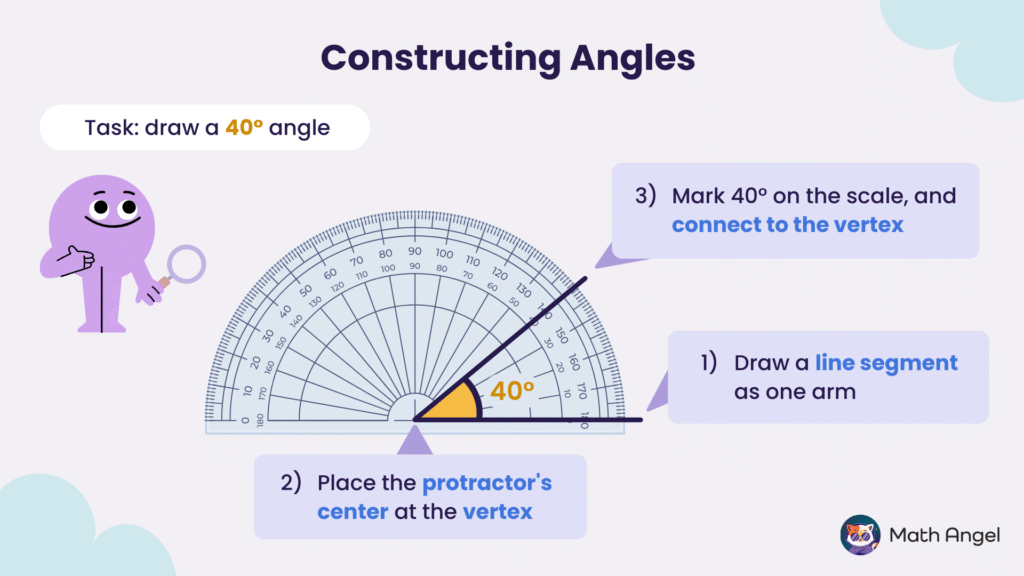
⏩️
To construct a 40° angle, follow these 4 steps:
- Draw the first arm: Start by drawing a straight, horizontal line. Choose a point on this line to be the vertex of the angle.
- Place the protractor: Align the center of the protractor exactly on the vertex. Ensure the zero line aligns with the first arm.
- Mark the angle: Locate 40° on the protractor’s scale and mark the spot.
- Draw the second arm: Use a ruler to draw a line from the vertex to the 40° mark.
And that’s it! You’ve constructed a 40° angle.
How to Draw a 210° Angle?
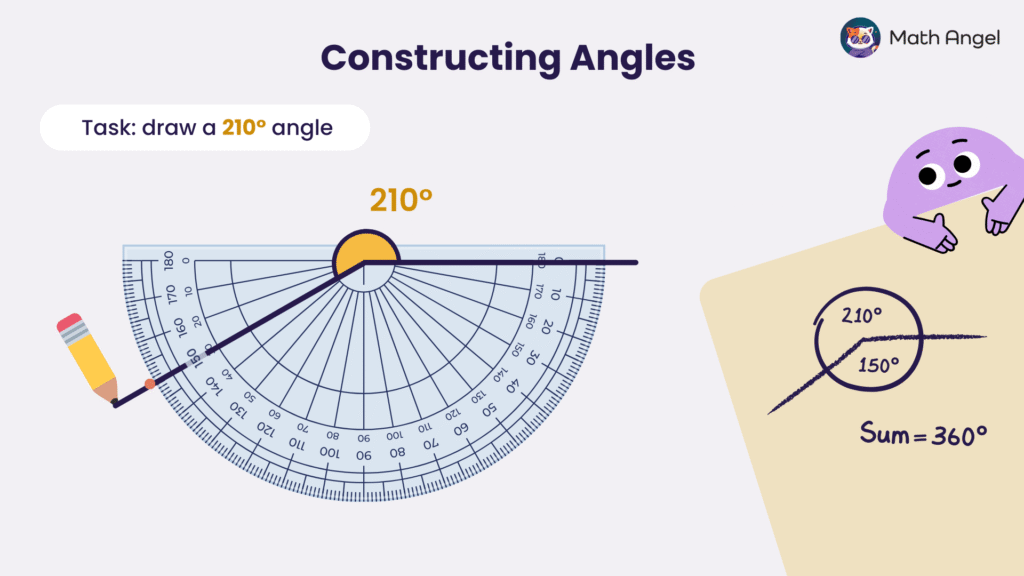
⏩️
To construct a 210° angle, follow these 3 steps:
- Understand the angle: Since 210° is more than 180°, it is a reflex angle. To draw it, find its smaller related angle by calculating $$360^\circ − 210^\circ = 150^\circ$$
- Draw the 150° angle: Put the protractor on the line. Line up the centre with the vertex and the zero with the baseline. Mark 150° and draw the line.
- Mark the 210° angle: The reflex angle on the outside of the 150° is the 210° angle.
And that’s it! You’ve constructed a 210° reflex angle.
🍪 Quiz: Test Your Skills on Acute, Obtuse and Reflex Angles
Membership Required
You must be a member of Math Angel Plus or Math Angel Unlimited to view this content.
🎩 Stuck on Angle Problems? Try AI Math Solver
Need math help? Chat with our AI Math Solver at the bottom right — available 24/7 for instant answers.

